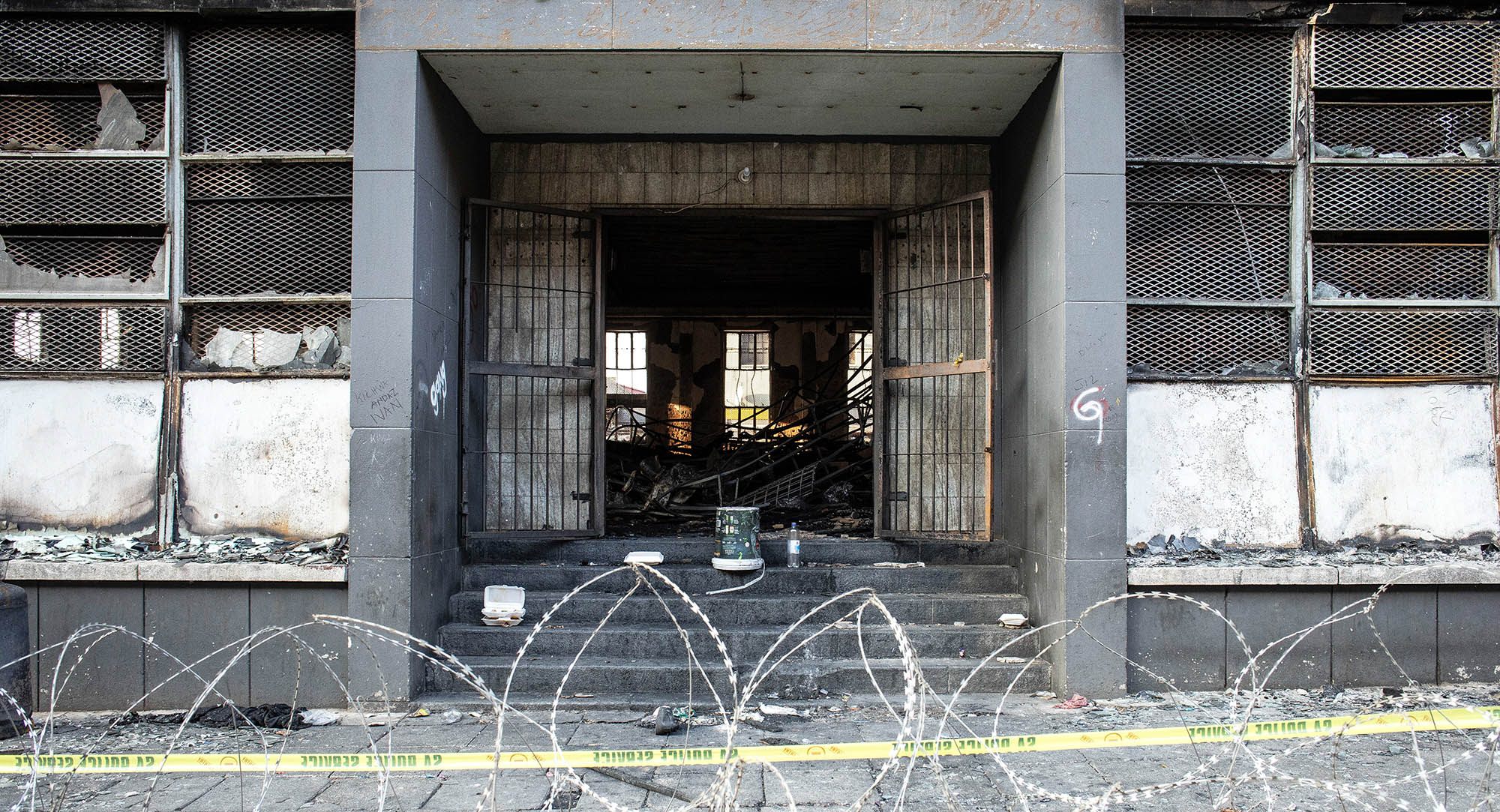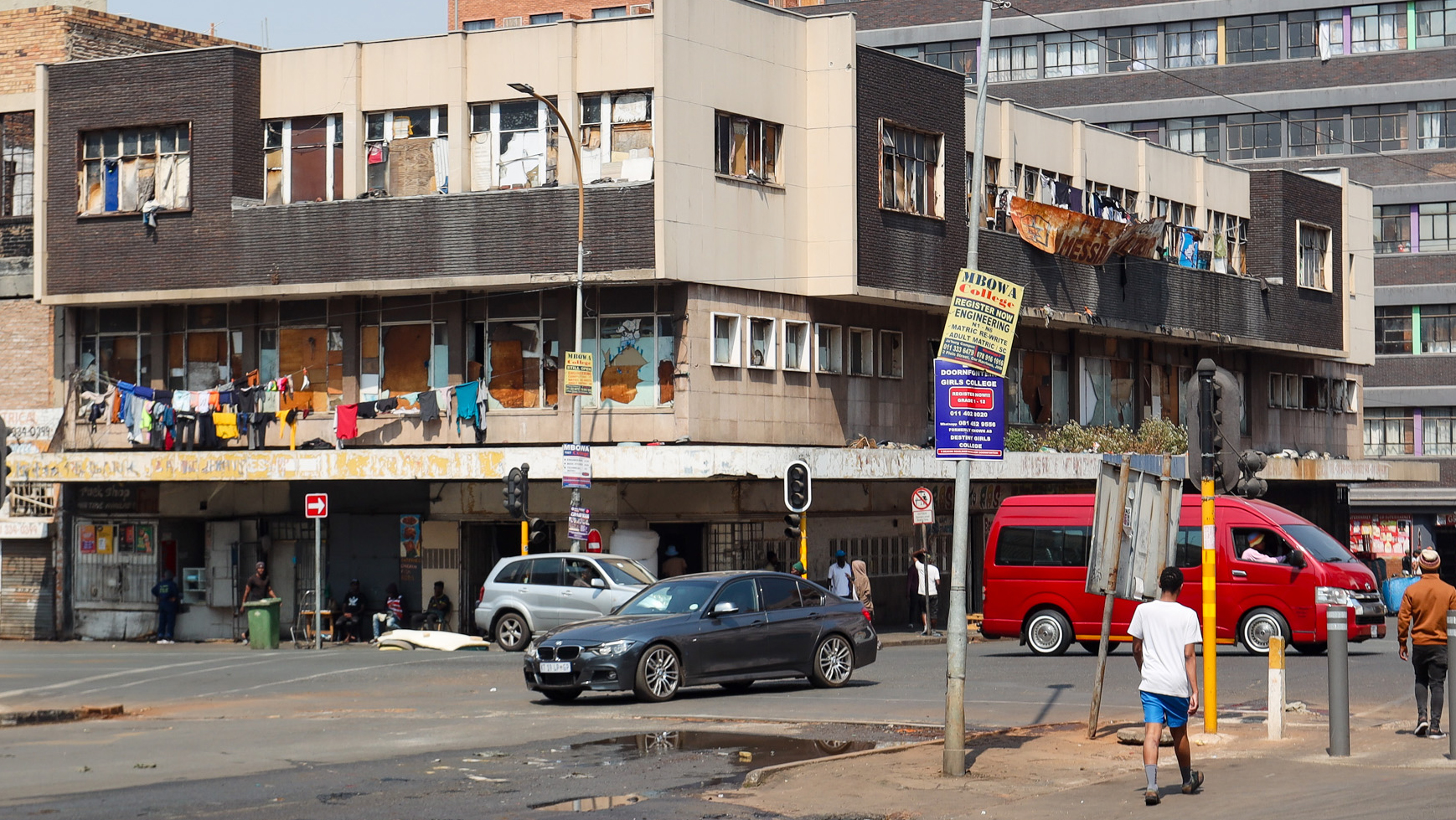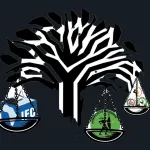DAILY MAVERICK WEBINAR
Reimagining Johannesburg after the Marshalltown fire: What’s happened and what’s next?

In the aftermath of the devastating Marshalltown fire, there is a growing need to rethink Johannesburg’s future. Daily Maverick’s Ferial Haffajee, together with human rights activist Andy Chinnah and architect Heather Dodd, discussed the challenges facing the inner city and some steps required to tackle housing issues effectively.
“A killer fire ripped through Johannesburg, one of 200 in the inner city this year alone. In which we believe 77 people lost their lives, however the death toll may be even higher than reported. How do we reimagine the city after the fire?”
This was the introduction by Daily Maverick associate editor Ferial Haffajee, as she set the stage for a critical conversation about mapping out the City’s way forward, post-fire. Joining her were human rights activist Andy Chinnah and architect Heather Dodd, who shared valuable insights about the complex issues at hand.
As the discussion resumed, Chinnah pointed out that the fire’s official death toll of 77 may not provide the full picture of the extent.
“The fire they have said has claimed 77 lives… when we chat to people in shelters (the survivors), they tell us the first floor actually crashed to the ground and therefore people on the ground were not accounted for. Their estimate is around 34 to 35 people lived on that floor alone. So when we start to talk about numbers, the numbers that we know of bodies that have been counted, the numbers will rise. In fact I got a message this morning of someone that has just come out of hospital. He made it.
“Two weeks ago there were some people in hospital who did not make it. They had to get a forensic team from Mpumalanga for DNA sampling, and those figures are only dependent when resources are available to tell us the exact numbers.”
Under the rubble
He added that “human settlements, the City and other governmental organisations have waited for us… the activists … to provide a database of the people that are survivors and those that are deceased. If you are asking if the City thinks there are more people under the rubble of the first floor… they are going to ask us that. We are not really forensics but we are doing as much as we can from a logic perspective; we started off by trying together how many people were in the building, asking individuals about their family, friends and neighbours, and if there is anyone in particular they are missing.
“That’s how we built the database of 501 that was the last count of survivors. It’s not an easy task because remember, people have lost all their documentation, and phones. It’s difficult to network and find out if you don’t have pictures of some of these people, you just have names,” said Chinnah, referring to the building’s many unknown residents, and “where there are 600 people living in a building you know people by face, not really by name, or you know them by nickname”.
Read more in Daily Maverick: City of Johannesburg points finger at NGOs and foreign nationals after deadly fire
Chinnah shed light on the birth of the Johannesburg Fire Response Action Group, a collective effort by activists to support survivors and address the aftermath of the fire. The group has been instrumental in clarifying widespread disinformation, and dispelling harmful political narratives that sought to blame foreign migrants for the tragedy.

Aftermath from the fire that destroyed the Johannesburg CBD building on 7 September 2023. (Photo: Gallo Images / Fani Mahuntsi)
Contrary to common belief, most of the building’s occupants are South African nationals, with detailed data revealing a diverse group of 501 survivors, including children as young as three weeks.
Read more in Daily Maverick: Most survivors of Johannesburg’s Albert St fire are South Africans, action group reveals, calls for urgent intervention
“When we start to talk about foreign nationals, it’s rhetoric, and we don’t really want to focus on that but rather on action,” said Chinnah. He believes the government has not stepped up to provide much for the affected families.
Read more in Daily Maverick: Survivors of Joburg’s Marshalltown fire left in limbo, hungry and desperate, after state’s empty promises
Take the Mhlebi family. For more than a month, they could not bury their 16-year-old, Melita Mhlebi, who died in the fire, because they lacked funds to transport her remains to their home town of Queenstown in the Eastern Cape. With the help of Chinnah, and a donation from the Helen Suzman Foundation, her family managed to finally lay her to rest on 7 October.
Read more in Daily Maverick: Albert Street fire – remembering Melita Mhlebi, one of 77 who died

The now closed Msibi House, a privately owned building located in New Doornfontein, which previously accommodated more than 400 people, including individuals with disabilities, some who were visually impaired and wheelchair-bound. (Photo: Google maps)
Social housing in context
Offering some context about why the social housing project in the inner city has died down, Dodd says, “Until 2010 we had quite strong entities such as the JDA [Johannesburg’s development agency], there was good leadership and reasonable city management. Not the best, but there were people who understood with vision, commitment and expertise. The housing fraternity in Johannesburg is really strong, we have a lot of people who know how to make things work, from policies to finance. And we have a strong network of people that manage housing in the inner city.”
Dodd acknowledges the transition of the inner city from a place of work to a place where people can also live.
“It’s been a massive transformation… When I saw the fire, the first thing I thought was that the location in Albert Street was a former post office. And second it was a fundamental thing – this building was where black bodies entered the urban migrant labour system next. Opposite it is Elangeni Gardens. When Elangeni was built, it contributed to the upliftment of the area and represented a major shift in the belonging and ownership in the inner city. The Usindiso Ministries Women’s shelter also complimented this housing as a holistic housing strategy within the precinct. With Absa to the north, it was a good story of potential urban regeneration, and it worked for a while.”

Razor wire surrounds the area in front of the gutted 80 Albert Street five-storey building, where at least 77 people died in a fire that broke out in downtown Johannesburg on 1 September 2023. (Photo: EPA-EFE / Kim Ludbrook)
Collaboration required
For Dodd, social housing institutions, housing entrepreneurs, government and the City should work hand in hand to continuously maintain properties in the City. And to release vacant buildings to social housing efforts to avoid the city shaping in a negative way before our eyes – the so-called “bad or hijacked” buildings.
Read more in Daily Maverick: City of Johannesburg pays lip service to tackling ‘hijacked’ buildings
Dodd said the challenges to make affordable housing in the inner city are huge, but there is so much opportunity.

Nugget Street Express building on the corner of Nugget and Commissioner streets in the Johannesburg CBD on 11 September 2023. The City of Johannesburg’s Group Forensics and Investigation Services has 188 active cases involving hijacked buildings. (Photo: Gallo Images / Fani Mahuntsi)
“There are so many buildings that are available, but it seems we can’t get everything to tie up at the moment. And from my perspective, after seeing the fire and the kind of grandstanding that was happening, if we cannot get people into the room now, then how will we ever do it?”
Daily Maverick sent out invitations to the City’s housing officials to join the webinar as a platform, to explain how it is seeking solutions to problems after the fire. However the officials could not make the webinar.
As the discussion unfolded, it became evident that while lip service has been paid to addressing the challenges faced by inner-city residents and “hijacked” buildings, meaningful action is still required.
The tragedy of the lives lost in the Marshalltown fire serves as a stark reminder that there is much work ahead to create a safer, more equitable Johannesburg for all its residents. DM
















 Become an Insider
Become an Insider
Comments - Please login in order to comment.